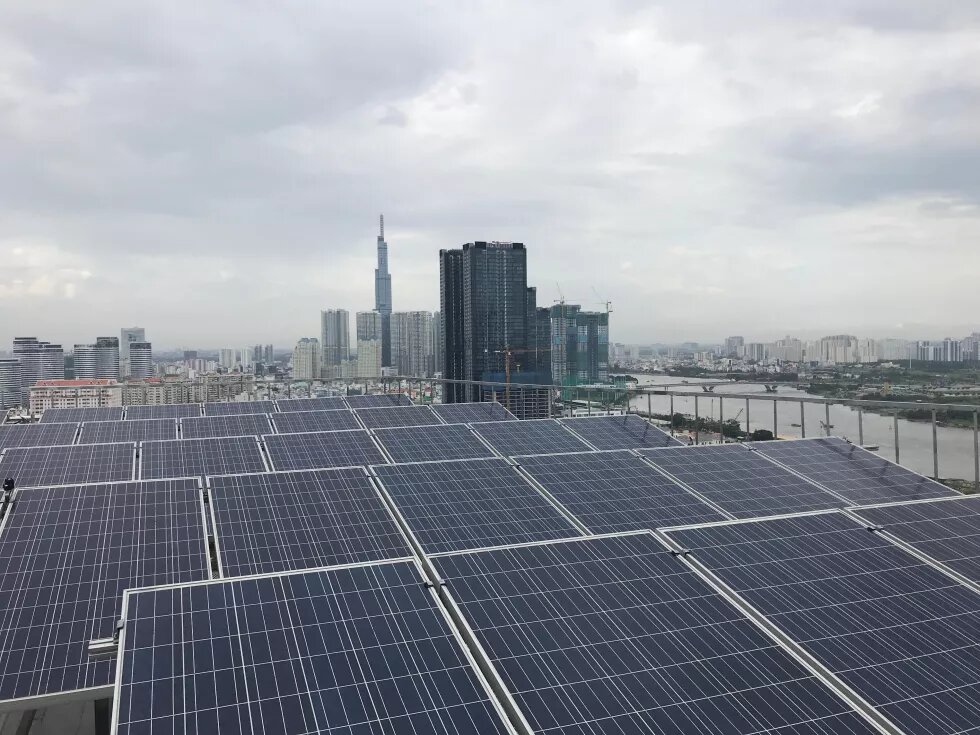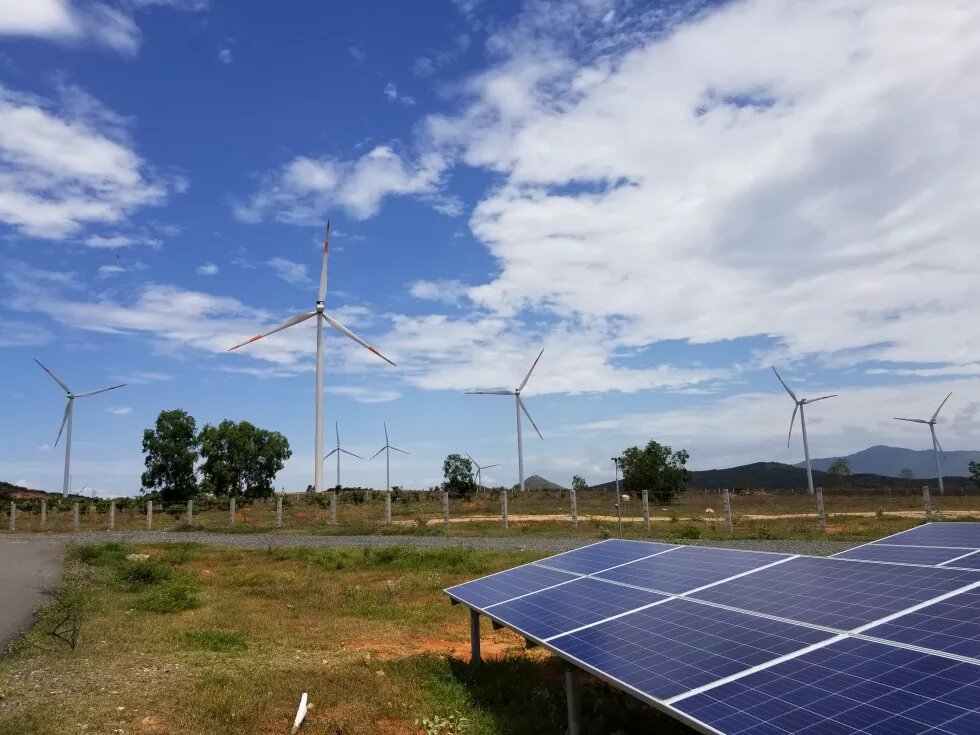
Association of Southeast Asian Nations (ASEAN) has set an ambitious target of securing 23 percent of its primary energy from renewable sources by 2025, but still mostly heavily depending on hydropower plants. Energy demand in Southeast Asia is expected to rise by 80% and electricity demand to triple between 2015 and 2040. It is a great opportunity for the region to choose a different path of “Shift towards sustainable development and resilient economies by leveraging their massive renewable energy potential.” While proponents are seeing positive indicators of energy transition in Southeast Asia, the energy transition initiative require supporting mechanism such as enabling policy, financing and coordinating mechanism for emerging conflicts.

In 2019, Vietnam’s solar energy achieved an impressive number of installed capacity– recognized as one of the world records. First and foremost, this achievement could happened because of the feed-in tariff (FiT) incentive from the government through Decision No. 11/2017/QD-TTg of the Prime Minister of Vietnam dated 11 April 2017, it has efficiently promoted solar energy development in Vietnam from the period 1 June 2017 to 30 June 2019.
As a continuation of incentive support from the goverment, the Prime Minister of Vietnam issued Decision No. 13/2020/QD-TTg dated 6 April 2020 on mechanisms to encourage the development of solar power projects in Vietnam which regulates feed-in tariff 2 (FiT2).
It is no doubt that this price was attractive and thanks to other support policy mechanism in term of land use support, license and permit support from both provincial and national government. This solar boom miracle happened for several reasons including inclusive efforts from the government, with strong political will to implement Nationally Determined Contributions plan for carbon dioxide emission, the readiness of both local and international investors, as well as awareness of big corporations in renewable energy consumption.
As an example, Trungnam Group invests on a 450 megawatt solar power plant, the largest of its kind in Southeast Asia. This solar power plant will be built in the south central province of Ninh Thuan in Vietnam. The construction of the solar farm in Phuoc Minh commune will start in the second quarter of this year and be completed in the fourth quarter. The 14 trillion VND (USD 592 million) plant will begin generating power by the end of this year. Under its socio-economic master plan, Ninh Thuan province seeks to become Vietnam's renewable energy hub with a total capacity of 8,000MW by 2030.
It is no doubt to mention on effortless and continuous support from development partners and advocacy movement from civil societies, with strong desire for improved living environment and higher standards of production in Vietnam. Local citizens has gradually been aware of the new clean technologies and understood of both economic benefits it brought to society. In the Southern part of Vietnam, several households have installed rooftop solar system and benefited from its electricity surplus sold to EVN.
Malaysia is the world’s third-largest producer of photovoltaic (PV) cells, while investment in Thailand’s solar manufacturing industry is increasing PV output for global markets. By deploying more renewable energy in the region, the economy of the region can be further strengthened for multiple economic benefits of accelerating clean energy deployment in the region.
Philippine President Rodrigo Duterte once addressed at State of the Nation last 2019: “We recognize the urgent need to ensure the sustainability and availability of resources, and the development of alternative ones. In this regard, I trust that [Energy Secretary Alfonso] Cusi shall fast-track the development of renewable-energy sources, and reduce dependence on traditional ones, such as coal”. His strong statement reaffirm straightforward strategy for the country moving towards the desire for a better and cleaner energy sector scenarios.
Recently, Thailand wants to set up a share power grid that connects hydropower power plants among ASEAN countries, including Vietnam, Thailand Ambassador to Vietnam Tanee Sangrat has said. Mr. Sangrat made the proposal at a meeting with Mr. Nguyen Thien Nhan, secretary of the municipal Party Committee of the southern economic hub of Ho Chi Minh City, on February 28, 2020. The power system serves as electricity supply for the whole ASEAN region. In term of trade, we hope that Vietnam and Thailand will become active members of the supply chain in ASEAN. Details will be discussion at a forum on climate change of ASEAN’s cities, which will be hosted in the HCMC later this year. With a larger and more diverse network it is undeniable that Southeast Asia countries can obtain higher renewable energy penetration with more flexibility. emphasized the importance of a transition toward renewable energy to job creation in region’s power sector in the future as well as the need for further multidisciplinary efforts from a wide range of stakeholders.
Another major threat to the Mekong region in Southeast Asia, large hydropower dams in water-energy infrastructure development, is also considered a top priority among countries. China has built several hydropower dams on the upstream of the Mekong River and more is planned to be built in the near future. Lower Mekong countries’ plans is to build 11 dams on the mainstream and 120 dams on its tributaries by 2040 (Mekong River Commission’s study 2017). Aside the benefits of a regional battery, large-scale hydropower projects brings more harms to ecosystems, biodiversity, food supply chain, and livelihoods for downstream communities, and often forcing affected communities to relocate. The recent situation in the lower Mekong countries was at alarming situation that Mekong River water levels dramatically low amid dam operations and insufficient capacity of electricity generation. Countries in the lower Mekong region including Cambodia and Vietnam, Myanmar had suffered from serious long-term drought that caused a significant shortage of electricity, because of reliance on electricity generated from hydropower. Hence, adequate policies and innovative solutions such as floating solar PV on resevoirs to reduce evaporation should be adopted to diversify the generation sources.
Rising energy needs and changing supply-demand dynamics are creating new and tough challenges for Southeast Asia’s decicsion makers. The International Renewable Energy Agency (IRENA) affirmed that unsubsidized renewable energy is now most frequently the cheapest source of energy generation and it supports sustainable development. Technological innovations and favorable government policies are key factors driving the clean energy transition in SEA in the coming years. Despite existing opportunities created by appropriate policies, some challenges require a region-wide approach.
Towards sustainable energy in the Mekong as well as in ASEAN as a whole requires joint effort and participation from all relevant stakeholders including civil society organizations, private sectors and especially ASEAN state leaders to develop inclusive and well-informed policy and ensure equitable access to the fair sharing of natural resources in the region. ASEAN governments should urgently coordinate and grab opportunity by shifting from non-sustainable energy to diversify other potential sources of energy towards sustainable development and resilient economy by leveraging their massive potential sources of renewable energy which is inclusive and equitable.
ASEAN leaders should aim at enabling policies for just and sustainable energy planning that ensure environmental and ecosystem sustainability in the Mekong and in ASEAN region as a whole, and to incorporate ‘Environment’ in the 4th pillar of ASEAN. Moreover, we should balance development projects with social and environmental sustainability by ensuing comprehensive free-prior informed consent consultation toward sustainable development that contribute to achieving global Sustainable Development Goals, with the objective of “leaving no one behind.” There is an urgent need for a supporting mechanism in term of land use management and environmental impact of utility scale projects, expand the transboundary power grid for more diverse and flexible penetration of clean energy, as well as develop inclusive long-term regulatory framework among member states in SEA region.
Vietnam as 2020 ASEAN Chair is expected to carry forward the work of previous chair and being the leading role in various aspects of ASEAN’s development and advancing some priorities of interest to Vietnam. When Prime Minister Nguyen Xuan Phuc officially took over the ASEAN chairmanship at the ceremony on November 4, 2019, he addressed the need for a cohesive and responsive ASEAN during its chairmanship through various pathways, including promoting stability; upholding solidarity and unity; increasing economic links and connectivity, deepening values and identities of ASEAN members; improving the efficiency of the ASEAN apparatus; and promoting ASEAN’s partnerships in the global community. ASEAN countries can utilize the huge potential of combined domestic renewable energy options towards a more secure, diverse, and affordable energy system.
The first quarter of 2020 has been ups and downs amid by COVID-19 outbreaks, as ASEAN Chair 2020, a decision to postpone the ASEAN Summits and related meetings - which was initially scheduled on 6 - 9 April 2020 - to end of June 2020 was made by the Prime Minister. Vietnam assures the ASEAN member states to be a safe destination for ASEAN leaders and all visitors with measures were closely taken in prevention and monitoring of this outbreak. In the coming time, Vietnam is always strive to closely facilitate the discussion via online channels on how to better coordinate among ASEAN members to navigate in this pandemic situation as well as to prepare for economic recovery and development in the ASEAN region.


